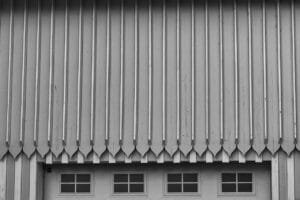Rethinking the Roof: Eco-Friendly Options That Make Sense

Roof Types – Energy Efficiency and Sustainability. Let’s be honest: most of us don’t think about our roof unless it’s leaking, or someone is trying to sell us shingles. But that big surface over your head? It can do more than keep the rain out.
Eco-friendly roofs aren’t just for high-tech homes or million-dollar renos. There are practical, good-for-the-planet options that can work for regular people with regular budgets.
1. The Cool Roof (No, Really, That’s Its Name)
Cool roofs reflect more sunlight and absorb less heat than standard roofing. It’s the material or a coating that makes it more reflective.
That means your house stays cooler in summer, and you don’t have to crank the A/C as much. Bonus: they can last longer because they don’t get baked to a crisp every summer.
Best for: Warm climates, and older homes that get toasty upstairs, or anyone who dreads their summer power bill.
2. The Green Roof (Literal Plants on Your Roof)

This one’s for the garden lovers. A green roof adds a living layer of plants over waterproofing material. It insulates, reduces stormwater runoff, supports pollinators, and just plain looks cool.
Caution: It’s heavier and needs proper structural support, but even a little “green roof” over a shed or garage can make a difference.
3. The Solar Roof (aka the Sun-Powered MVP)
You’ve probably seen solar panels around. Now there are solar shingles. Solar panels or shingles – you get electricity and reduce your reliance on the grid.
Best for: Homes that get lots of sun. Also ideal if you like lower power bills and want to brag (a little) about generating clean energy.
4. The Recycled Roof (Old Stuff, New Life)
Some shingles are made from recycled materials like rubber, plastic, or wood fiber. They’re durable, often look like slate or wood, and keep waste out of landfills.
Best for: Anyone needing a new roof who wants a greener option without adding major complexity.
5. The Metal Roof (The Quiet Overachiever)
Metal roofs have come a long way. They’re fire-resistant, recyclable, and super durable (think 40–70 years). Plus, they reflect heat better than asphalt and work well with solar panels.
So, Where Do You Start?
- Not replacing your roof yet? Think about adding insulation under it or even a reflective coating.
- Need a new roof soon? Ask your contractor about energy efficiency, recyclability, or solar compatibility.
- Just curious? Look at your roof from across the street and imagine it doing more.
Even if you don’t go full green-roof, choosing a more eco-friendly roofing option can lower bills, reduce emissions, and give your home a little future-proofing.
Here’s a visual comparison chart of eco-friendly roof types, focusing on energy efficiency and overall sustainability:
And here’s a quick table to compare features:
| Roof Type | Key Benefits | Best For | Lifespan |
| Cool Roof | Reflects heat, lowers cooling costs | Hot climates, high cooling bills | 20 years |
| Green Roof | Insulates, absorbs rain, supports biodiversity | Urban areas, flat roofs, garden lovers | 40 years |
| Solar Roof | Generates electricity, lowers bills | Sunny areas, long-term savings | 25 years |
| Recycled Roof | Reduces landfill waste, durable | Eco-conscious re-roofing | 30 years |
| Metal Roof | Recyclable, long lifespan, solar-friendly | All climates, longevity, solar setups | 40 years |
- Green Roofs and Solar Roofs score highest on sustainability.
- Cool Roofs and Metal Roofs are strong all-rounders, with good efficiency and lifespan.
- Recycled Roofs offer solid eco-benefits, especially when you’re re-roofing anyway.
Environmental Ratings for Roofs?
If you’re considering roofing materials, check for these labels
- ENERGY STAR: Cool roofs can earn this label if they meet certain reflectivity and emissivity standards.
- LEED Certification: Green and solar roofs contribute points to a building’s LEED rating (Leadership in Energy and Environmental Design).
- CRRC Ratings: The Cool Roof Rating Council provides standardized data on solar reflectance and thermal emittance.
